|
|||||||||||||||||||||||||
|
|||||||||||||||||||||||||
|
|
|||||||||||||||||||||||||
|
|||||||||||||||||||||||||
|
Symposium K: i-Caloric Materials and Applications.
The general impression from participants and organizers is that the symposium was very successful. The number of abstracts, although not as high as other symposia, was higher than we expected. All the speakers, invited or not, attended. The works presented, both the seminars and the posters, were of excellent quality.
Alexandre Magnus Gomes Carvalho (CNPEM)
Symposium S: Computational Design for Development of Functional Materials – Synergy between Theoreticians and Experimentalists
The symposium had a high level of presentations, with the participation of national and international researchers. The questions and discussions were intense. We highlight the participation of researchers Elson Longo, and Stefano Baroni, São Carlos, Brazil and, Trieste, Italia, respectively. Both presented the state of the art in applications and correlations between theoretical and experimental research. The poster section also had a high level and with the intense participation of young researchers, demonstrating that the future of theoretical research applied to materials is promising.
Julio Ricardo Sambrano (Unesp)
Symposium T: Nanofibers, Applications and Related Technology.
The symposium T was organized by Profa. Dra Claudia Merlini (UFSC), Prof. Dr. Cicero R. Cena (UFMS), Prof. Dr. Deuber L. S. Agostini (UNESP) and Profa. Dra Roselena Faez (UFSCar). We received 75 abstracts, 6 oral presentations and 5 invited speakers. Interesting and highly quality works were presented in two days of the symposium by authors from different regions of Brazil and international institutions of different countries. The invited speakers were Prof. Dr. Enzo Menna (Università degli Studi di Padova – Italy), Dr. Gilberto Siqueira (Swiss Federal Laboratories for Materials Science and Technology (EMPA), Switzerland), Profa. Dra. Ana Paula Immich (Universidade Federal de Santa Catarina (UFSC), Prof. Dr. Hernane da Silva Barud (Universidade de Araraquara (UNIARA), Prof. Dr. Eliton S. Medeiros (Universidade Federal da Paraíba (UFPB). The invited speakers, all experts and distinguished professors in the field, have made important contributions to the scientific community, bringing innovations related to the manufacture, applications and characterizations of natural and synthetic nanofibers. The Symposium was financial supported by FAPESC (Edital PROEVENTOS 2019/2020). This was the second edition of Symposium focused exclusively to Nanofibers and Applications in the B-MRS Meeting, with an expressive numbers of participants.
Claudia Merlini (UFSC)
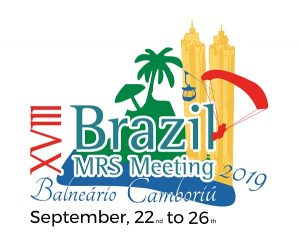 Participantes
Participantes– Cerca de 1.700 participantes.
– Gênero: 56% homens, 44 % mulheres.
– 42 % estudantes de pós-graduação, 35 % profissionais, 23 % estudantes de graduação.
– Países dos inscritos: 27 países da América do Sul, Central e do Norte, da Europa e da Ásia (95% do Brasil).
– Estados dos inscritos do Brasil: 25 estados da federação, cobrindo as 5 regiões do país.
– Instituições representadas: cerca de 400.
– 23 simpósios organizados por mais de 100 organizadores de 9 países.
– Mais de 2.000 trabalhos efetivamente apresentados (aproximadamente 1.500 pôsteres, 400 orais e 100 palestras convidadas).
– 34 trabalhos premiados entre 137 trabalhos inscritos para concorrer aos prêmios.
– 14 salas para apresentações orais simultâneas.
– 8 palestras plenárias e 1 palestra memorial.
– 13 palestras técnicas de patrocinadores.
– 1 tutorial, 2 painéis de discussão e 1 workshop.
– 17 expositores/ patrocinadores.
– 33 apoiadores, principalmente editoras/ revistas científicas e agências brasileiras de fomento.
(Established by B-MRS in honor of Bernhard Gross, a pioneer of Brazilian materials research. It distinguishes the best oral and poster contributions presented by students in each symposium)
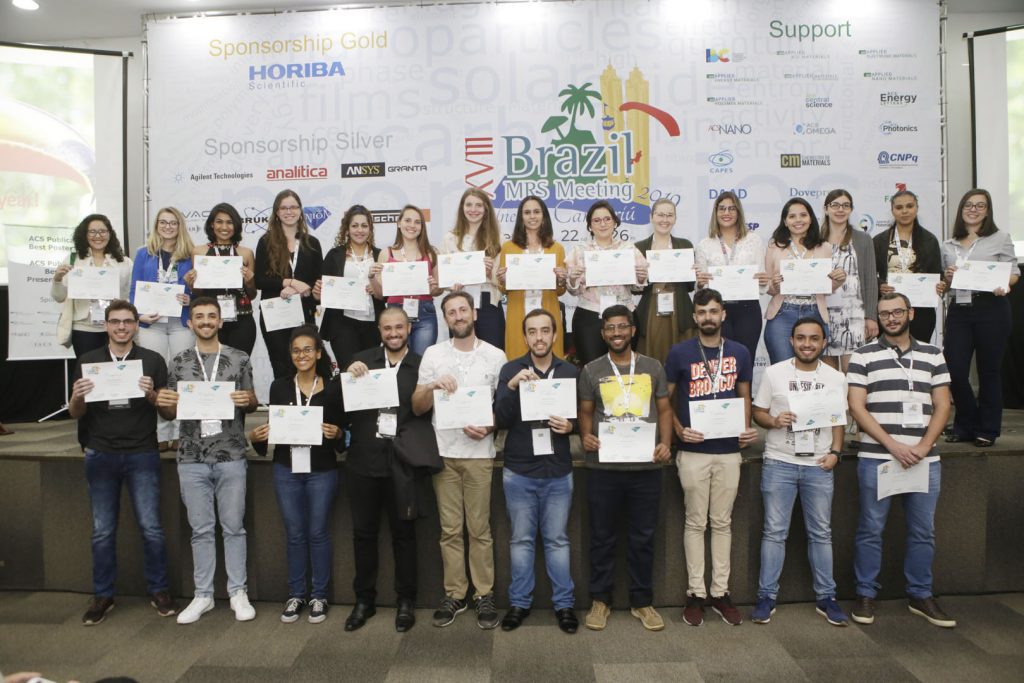
Symposium A
Symposium B
Symposium C
Symposium D
Symposium E
Symposium F
Symposium G
Symposium I
Symposium J
Symposium M
Symposium N
Symposium O
Symposium P
Symposium Q
Symposium R
Symposium S
Symposium U
Symposium V
Symposium X
(Sponsored by journals of ACS Publications, a division of the American Chemical Society. Prizes for the best student contributions of all the event)
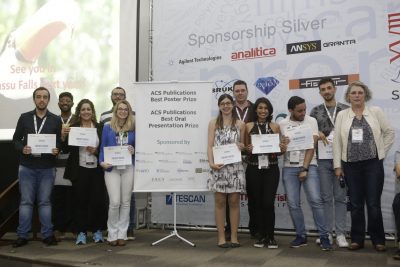
ACS Publications Best Oral Presentation Prizes
ACS Publications Best Posters Prizes
(Sponsored by journals of the Royal Society of Chemistry. Prizes for the best student contributions of all the event)
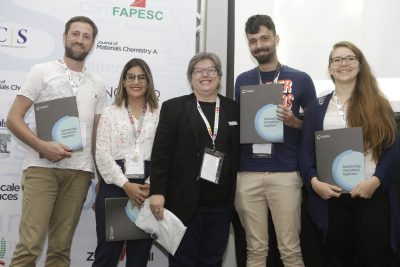
|
||||||||||||||||||||||||||||||||||||||||||||||||
|
||||||||||||||||||||||||||||||||||||||||||||||||
|
Description
While the electronic age has made the publication process easier and quicker, optimizing the structure of a scientific paper requires a certain degree of skill and proficiency. During this “ACS Publications’ Meet the Editors” event, editors from some of our journals will summarize the key steps involved in writing an effective paper, journal submission, review processes, and post-publication efforts.
Panelists

When?
September 25, 2019, from 12:00 to 14:00.
Where?
At Sibara Hotel, Persico room (3rd floor).
Registration
Free registration is limited to 180 participants. Go the general registration meeting system and choose this session in “add/edit activities”: https://www.eventweb.com.br/xviiisbpmat/home-event/
Lunch boxes will be provided.
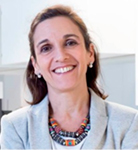
After blood, bone is the most frequently implanted/ transplanted tissue, with about 2 million bone grafts performed each year worldwide – a number that tends to increase at the rate of population aging. A well-known case is that of the jaw graft to allow firmer dental implants. However, many other causes, such as tumors, severe fractures, congenital malformations or even infections, may cause a patient to need a graft, that is to say, an implant of a natural or synthetic piece of bone to support the natural growth of bone tissue.
In Barcelona, at the Universitat Politècnica de Catalunya (UPC), a research group has been successfully working on the development of innovative tissue regeneration biomaterials. Led by Professor Maria-Pau Ginebra, the multidisciplinary group consists of 30 researchers. After many published papers and patents obtained, Professor Ginebra decided to found, along with other members of the group, a spin-off company to bring the results of years of research into real life. Thus, in 2013, Mimetis Biomaterials was created, dedicated to nature-inspired bone regeneration solutions.
On the afternoon of September 24, Prof. Maria-Pau Ginebra will deliver a plenary lecture at the XVIII B-MRS Meeting. She will talk about a new generation of bone graft biomaterials, made through nature-inspired methods that allow control of the structure and composition of the material at the nano scale. The resulting biomaterials bring together the benefits of both natural and artificial bones, including the possibility of producing personalized grafts on 3D printers.
See our mini-interview with this Spanish scientist, Full Professor and Head of the Department of Materials Science and Metallurgy at UPC, President of Mimetis Biomaterials, and Member of the Editorial Board of Acta Biomaterialia, Journal of Tissue Engineering and the International Journal of Molecular Sciences.
B-MRS Newsletter: – You work in a research area that has a direct impact on society. What, in your opinion, is your scientific discovery with the greatest actual or potential impact? Please describe it very briefly.
One of the great challenges in the field of bone regeneration is the development of synthetic materials that are able to be degraded and transformed in newly formed bone. In this case, the synchronization between material degradation and new bone deposition is critical, and very difficult to achieve. We have demonstrated that this can be accomplished by using biomimetic processing routes, which allow tuning the nanostructure and composition of hydroxyapatite, mimicking more closely the mineral phase of bone. In this way the synthetic material can enter the natural bone remodeling cycle, allowing for this progressive transformation in new bone tissue.
B-MRS Newsletter: – Turning scientific knowledge into products is not an easy task. In your experience, what are the most important factors in getting a lab research to become a product on the market?
The transformation of the scientific achievements into real products is indeed a great challenge. This is particularly difficult in the biomedical field, where the scientists face a number of regulatory restrictions which were often overlooked during the previous stages of more “academic” research. In my experience, to be successful, you need the confluence of a good idea and the right people. Moreover, you need money. In summary, in my experience there are three main aspects that determine the success of the translation of a good idea to the market: 1) selecting a good team, with people mastering the different aspects of entrepreneurship, which we, as scientist, do not know; from regulation/legislation to marketing and financial aspects; 2) finding appropriate investors is always necessary; the innovation in the biomedical field is particularly expensive; 3) being willing to work really hard.
For more information on this speaker and the plenary talk she will deliver at the XVIII B-MRS Meeting, click on the speaker’s photo and the title of the lecture here https://www.sbpmat.org.br/18encontro/#lectures.
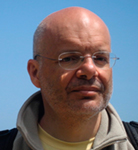
Many shades of blue, red and purple that we can see in the vegetable kingdom (for example, in grapes, raspberries, eggplants and flowers such as violets) are known to be generated by the presence of natural pigments called anthocyanins. However, what makes anthocyanin express in a plant a certain tone of this wide range? This intriguing basic science issue has applications of great interest to the food industry in its quest for healthier dyes from natural components.
A thorough answer will be presented in a plenary lecture of the XVIII B-MRS Meeting by Stefano Baroni, Full Professor of Condensed Matter Theoretical Physics at Scuola Internazionale Superiore di Studi Avanzati (SISSA) – an institution located in Trieste (Italy), dedicated to research and graduate studies in various areas of science. Baroni has been studying that issue, using, mainly, a computational method that considers phenomena occurring at the molecular level over several time scales.
Prof. Stefano Baroni is an internationally renowned Italian scientist who loves to invent and improve computational methods to unveil the properties of matter at the molecular scale and apply them to problems of fundamental and applicative interest. For example, Baroni is one of the principal creators of Density Functional Perturbation Theory (DFPT), a computational tool that allows the study of physical properties of materials that depend on responses to external perturbations. He is also the founder and one the main instigators of the Quantum ESPRESSO, project, one of the most popular open source softwares for quantum materials modeling and calculations at the nanoscale, and founding director of the Quantum ESPRESSO Foundation.
Stefano Baroni obtained a degree in Physics from the Università di Pisa (Italy) in 1978. After that, until 1984, he was a postdoctoral fellow at the École Polytechnique Fédérale de Lausanne (EPFL), in Switzerland. Later, he became Assistant Professor at the Department of Theoretical Physics at the Università degli Studi di Trieste until he joined SISSA in 1988. From 1994 to 1998, he was Director of CECAM, a European center for research in computational sciences and their applications, then based at the École Normale Supérieure de Lyon, in France. Thereafter, until 2003, he served as coordinator in Trieste of the Istitituto Nazione per la Fisica della Materia (INFM). From 2001 to 2008, he was Founding Director of the DEMOCRITOS national simulation center, now part of the Italian CNR. Baroni has been a visiting professor at many institutions around the world, including Université Pierre et Marie Curie (France), Princeton University (USA), University of Minnesota (USA), University of Sydney (Australia), University College London (UK).
See our mini interview with Prof. Stefano Baroni.
B-MRS Newsletter: – We´d like to know more about your scientific work. Please choose one or two of your favorite/ high-impact contributions, briefly describe them, and share the references.
For forty years my research has been motivated by the attempt to solve the fundamental equations that determine the properties of materials at the atomic scale, in the most realistic conditions practically accessible to computational science. While this effort, which I shared with many scientists more talented than me around the world, is having a tremendous impact in many and diverse technologies, as this Conference convincingly witnesses, my own motivation has been, how to say?, a bit “swotty”? Theorists like me strive to understand. Geniuses sometimes understand what they cannot teach or do not care to implement. Ordinary swots have to do, implement, and teach in order to convince themselves they have understood, and this is what I have been doing all my life, like a Renaissance craftsman. I am probably mostly known for density functional perturbation theory [https://doi.org/10.1103/RevModPhys.73.515], a technique that Paolo Giannozzi and I introduced in the late 80s [https://doi.org/10.1103/PhysRevLett.58.1861] and that is now considered the state of the art in the simulation of the vibrational properties of condensed matter. In the late 00s my colleagues and I generalised this technique to account for the dynamical phenomena that are probed in optical spectroscopies [https://doi.org/10.1103/PhysRevLett.96.113001, https://doi.org/10.1063/1.2899649]. This work provided the methodological motivation for me to enter the field of molecular spectroscopy, which eventually led me to study the color of flowers and fruits. The challenge to compute what others believe cannot be computed was also the motivation for me to enter the fascinating field of heat and charge transport in condensed matter, a senile passion I will have the privilege to report on in Symposium S of this conference on September 24 at 9:30 [https://doi.org/10.1038/nphys3509, https://doi.org/10.1038/s41598-017-15843-2, https://doi.org/10.1038/s41467-019-11572-4, https://doi.org/10.1103/PhysRevLett.122.255901, https://doi.org/10.1038/s41567-019-0562-0].
B-MRS Newsletter: – The subject of the talk aroused our curiosity. Could you tell us what led you to study these pigments? Does it have to do with industrial interest? With the search for fundamental answers? With the application of a new methodology?
As mentioned before, I was drawn to molecular spectroscopy while seeking useful applications for a new computational method that my collaborators and I had devised to deal with dynamical perturbations to quantum-mechanical systems. Ask around what would be the most important application of molecules absorbing light, and many would answer: “solar cells to produce clean, inexhaustible, energy”. So we went, and we were induced into the wrong thinking that efficient and inexpensive solar cells could be manufactured “using fruit juice” (i.e. using anthocyanins as the light-absorbing element of a photovoltaic device). It soon became clear that while the principle per se is not wrong (in fact, organic solar cells based on it are routinely assembled and used for educational purposes https://www.teachengineering.org/activities/view/uoh_organic_activity1, https://education.mrsec.wisc.edu/titanium-dioxide-raspberry-solar-cell/) the stability and efficiency of the resulting device are far too poor for industrial purposes. Meanwhile, our work attracted some attention, and I was invited to some important meetings on solar energy. On one occasion, I declined the invitation knowing that our work could not have a real impact in the field. The organisers flatteringly insisted, and I finally accepted under the condition that I would not talk of solar energy, but of the color of fruits and flowers, which had meanwhile started to arouse my curiosity. A few months later I was approached by a representative of a head-hunting company who, seeking an expert in the molecular simulation of natural dyes on behalf of a major multinational food manufacturer, had stumbled across the abstract of my talk. When I received the telephone call I thought it was a prank and I almost hung up on her. I resisted the impulse, and that was the beginning of an exciting five-years adventure in industrial research, which I never thought I would have lived and whose story I will tell in Balneário Camboriú …
For more information on this speaker and the plenary talk he will deliver at the XVIII B-MRS Meeting, click on the speaker’s photo and the title of the lecture here https://www.sbpmat.org.br/18encontro/#lectures.
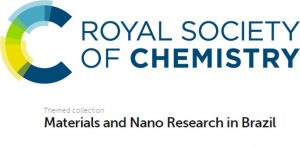 A Royal Society of Chemistry (RSC) preparou uma coleção online de artigos de autores brasileiros em comemoração ao XVIII B-MRS Meeting (Balneário Camboriú, 22 a 26 de setembro de 2019). A RSC é apoiadora desta edição do evento anual da SBPMat.
A Royal Society of Chemistry (RSC) preparou uma coleção online de artigos de autores brasileiros em comemoração ao XVIII B-MRS Meeting (Balneário Camboriú, 22 a 26 de setembro de 2019). A RSC é apoiadora desta edição do evento anual da SBPMat.
Intitulada Materials and Nano Research in Brazil, a coleção reúne 55 artigos publicados em periódicos da editora RSC entre 2017 e 2019. Todos os artigos selecionados podem ser acessados sem custo (open access) até 15 de outubro de 2019.
A coleção está disponível em www.rsc.li/brazil-mrs-2019
|
|||||||||||||||||||||||||||
|
|||||||||||||||||||||||||||
|